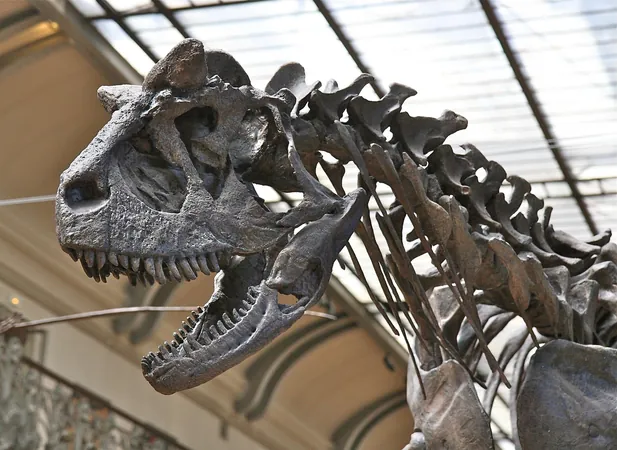
Why Bygone Beasts Command Millions: An Art Historian Explains the Dinosaur Auction Craze
2025-07-22
Author: William
Dinosaurs Selling for Millions: The New Trend in Art and Fossils
In a jaw-dropping auction at Sotheby's New York, a juvenile dinosaur fossil, Ceratosaurus nasicornis, fetched a staggering $30.5 million. This transaction is a vivid illustration of an exciting resurgence in the art market's fascination with fossils and natural history, particularly paleontology and geology. The auction was specifically dedicated to natural history, underscoring this growing trend.
Leading the charge in this fossil frenzy are iconic specimens like "Stan," the most expensive T. rex, which sold for $31.8 million at Christie's in 2020. In 2024, a Stegosaurus named "Apex" broke records with a whopping $44.6 million sale in New York.
The record-setting $30.5 million sale of Ceratosaurus—much smaller than its T. rex counterparts—dramatically raises the stakes in the fossil market. Even a T. rex foot at the latest Sotheby’s auction blew past its expected price of $250,000–$300,000, selling for an astonishing $1.8 million. In comparison, a full T. rex skeleton known as "Sue" sold for $8.4 million in 1997, which would be equivalent to about $17 million today—a veritable bargain by modern standards.









 Brasil (PT)
Brasil (PT)
 Canada (EN)
Canada (EN)
 Chile (ES)
Chile (ES)
 Česko (CS)
Česko (CS)
 대한민국 (KO)
대한민국 (KO)
 España (ES)
España (ES)
 France (FR)
France (FR)
 Hong Kong (EN)
Hong Kong (EN)
 Italia (IT)
Italia (IT)
 日本 (JA)
日本 (JA)
 Magyarország (HU)
Magyarország (HU)
 Norge (NO)
Norge (NO)
 Polska (PL)
Polska (PL)
 Schweiz (DE)
Schweiz (DE)
 Singapore (EN)
Singapore (EN)
 Sverige (SV)
Sverige (SV)
 Suomi (FI)
Suomi (FI)
 Türkiye (TR)
Türkiye (TR)
 الإمارات العربية المتحدة (AR)
الإمارات العربية المتحدة (AR)